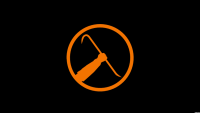MendelMax
The Mendel Max is a rep-rap derivative 3D printer. Read more about the Mendel Max here: http://www.mendelmax.com/
| Status | Offline as of Feb 23, 2014 |
|---|---|
| Training | Mandatory |
| Hackable | NO |
| Usage Restrictions | Members Only, after 3D printer training |
| Owner | Andrew Milne |
| If it Breaks | Attach an “out of order” sign & Contact 3D printer working group. |
| Loan Status | Semi-permanent |
| Arrival Date | May 2013 |
| Location | Main room Bench C |
| Value | $$ |
| Champion | See Compendium of Champions |
Feb 22 Update
- Nozzle is unblocked and reassembled.
- PIDs for bed and nozzle appear to be wrong: they refuse to heat to the desired temperature.
- Bed needs to be re-levelled.
- extrusion rate needs to be recalculated.
- z height sensor is loose and should be tightened.
– Dan R
Usage Guide:
1. Load your 3D file onto the desktop computer beside the printer.
2. Open Pronterface and connect to the printer. If it doesn't connect, try changing the com port setting in pronterface, or unplug and replug the USB cable from the printer.
3. Turn on the printer power supply and electronics fan. The printer's motors and heating elements are powered by the ATX power supply beside it. The stepper drivers are cooled by an external fan, activated by a toggle switch. DO NOT FORGET TO TURN ON THE FAN - the pololu stepper drivers will overheat, switch off, and you will loose your print.
4. Check the printer's Z endstop calibration. Using the manual controls (four arrows in the top left of the Pronterface window) home the Z axis and make sure that the print nozzle stops just above the print surface (the Z endstop isn't very secure and is prone to shift). It should stop just high enough off the print bed that you can slide a business card under it. If the nozzle is out of position, wiggle the endstop up and down until the nozzle stops at the right hight.
5. Slice your file using pronterface. Load your file into Pronterface, it will automatically slice the file.
6. Check your gcode. Click on the gcode preview in the centre of the Rronterface window (the area with grid lines). A preview window will open. If you scroll up and down with the mousewheel you can preview each layer of your print. Make sure nothing is crazy.
7. Print! Do not leave the space while you are printing.
8. Record your print in the log book. There should be a paper book in front of the printer. Record the job your running and any problems you have.
9. You can contact me (Andrew) on the list if you have any problems.
Printer Maintenance:
The printer could use some upgrades. That being said, please keep everyone in the loop if you're going to work on the printer. 3D printers have a habit of being broken, so we're going to try to keep this one up as much as possible. The upgrades that I would make next are:
- new Z endstop holder that uses a screw to adjust height (this would have to be custom designed, can be 3D printed).
- new power supply. I'm using an ATX supply, which apparently delivers quite a few amps on the 12V rail, but the printer is still slow to heat up. I would like to replace the power supply with a cheap switching power supply.
- automatic fan. I need to hook the fan up to a 12V line from the power supply so that it turns on automatically when you power the printer on. It should also be permanently mounted to the printer (see Arduino mounting bracket).
- new Arduino mounting bracket with fan and cover. Right now the Arduino is attached to a 3D printed bracket, which is attached to the aluminum extrusion base using Tnuts. I would like to design a new mount that has a holder for a computer fan (to cool the stepper drivers), and a cover to protect the wiring coming off the Arduino.
- new spring loaded Wade's Extruder. the current extruder mount doesn't use a spring and bearing and the nuts shake loose eventually.
- filament spool attached to printer. Not a necessity, but it would save space and make the printer more portable.
